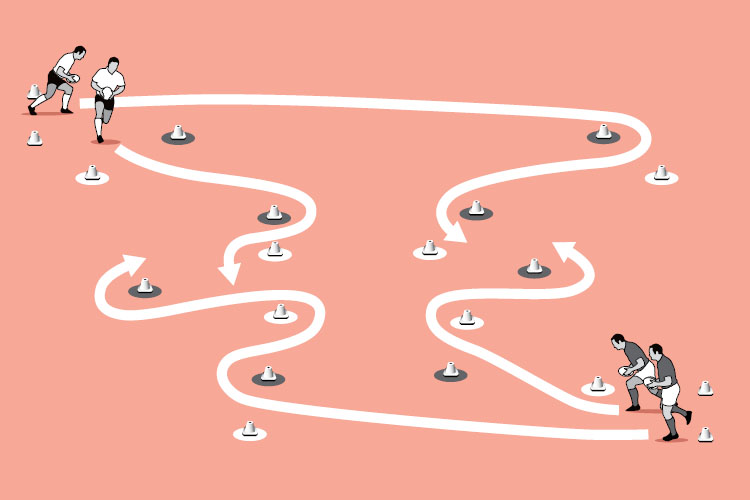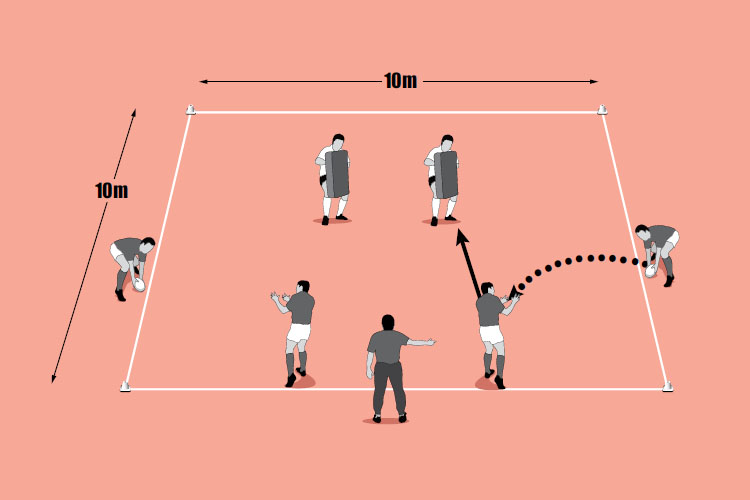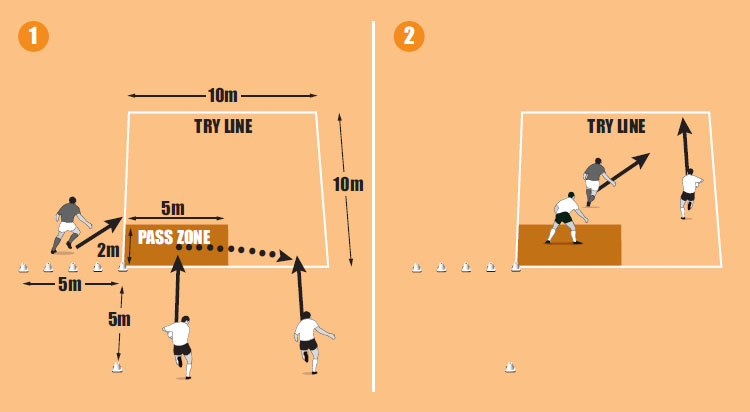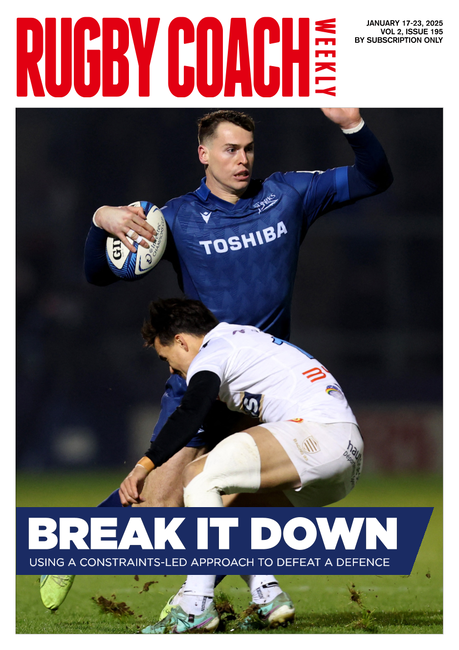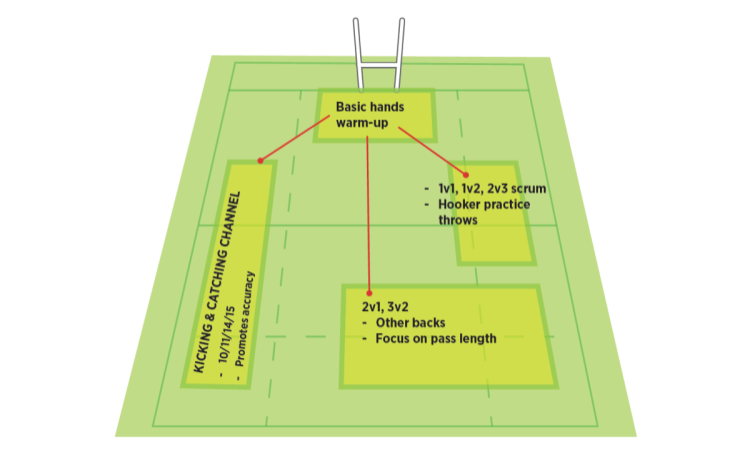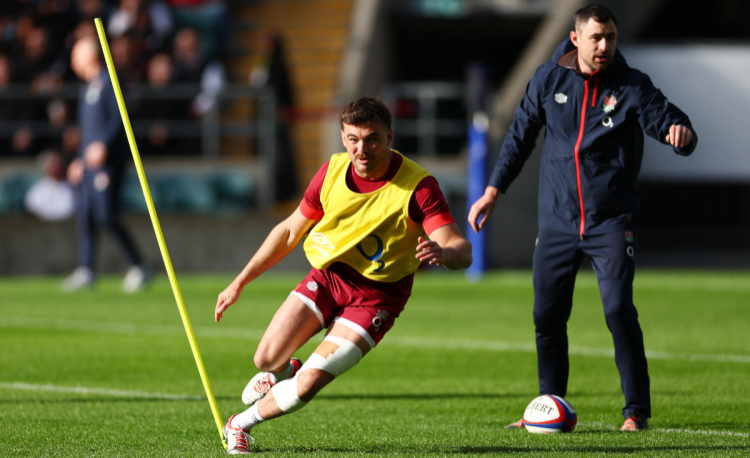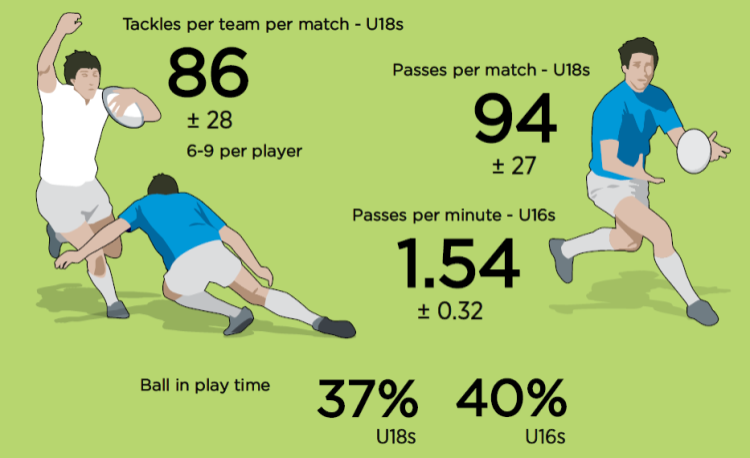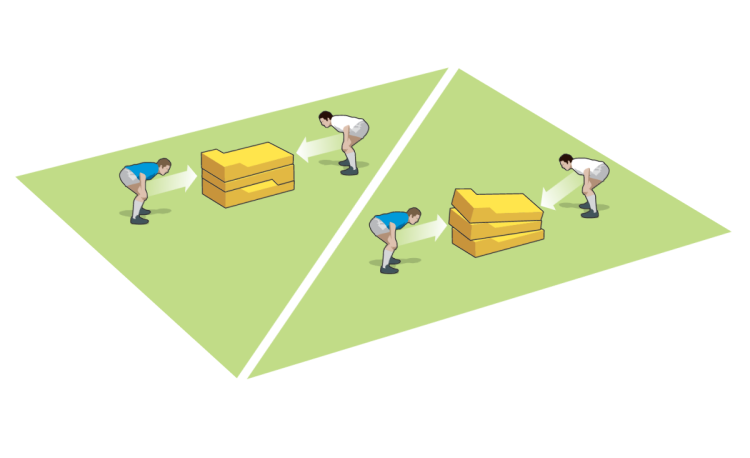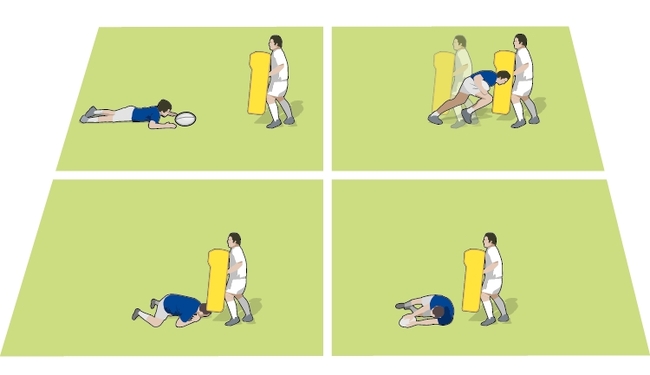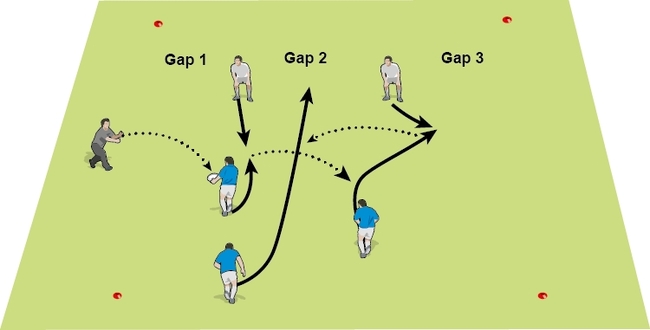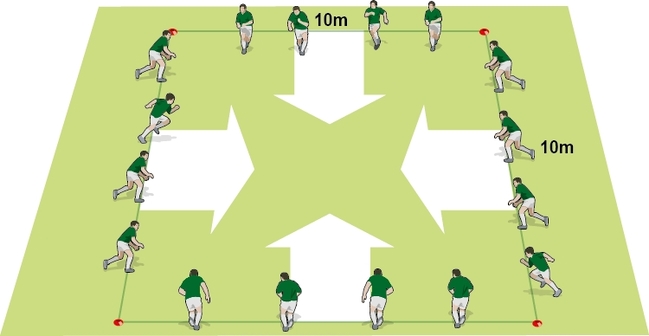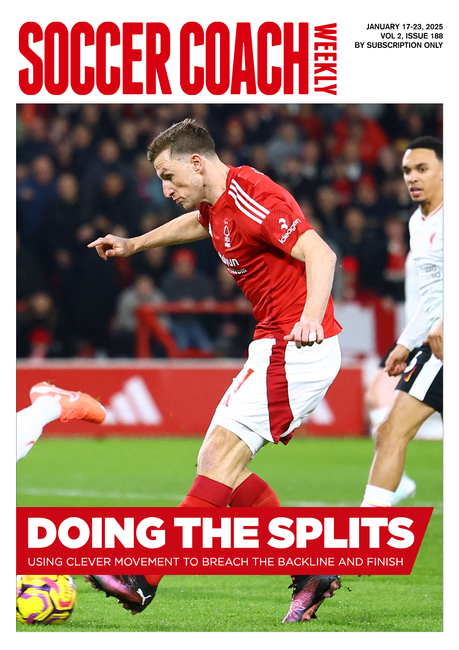Developing positional speed
Speed training needs to be specific to the player’s position. Here are three training ideas for different positions.
POSITION-SPECIFIC TRAINING
While there are some core speed and agility techniques all players need, to take it to the next level, your players need some position-specific running skills.
Think about the footwork patterns your players might use in a game and build them into a position-specific training routine at the end of every warm-up. Once the players have got used to it, they can set up the exercises themselves.
Here are some examples of the sort of position-specific running and footwork patterns your players need to develop. The exercises should be performed five to ten times in a session and with 100% effort. Make sure lateral movements are always performed left and right.
Once players are comfortable with running the pattern, you can introduce a ball.
10, 12 AND 13
The fly-half and centres usually receive the ball with space between them and the opposition defence. They need to find space to attack without running sideways and using up space outside them. Exercises need to mix changes of direction with acceleration.
MIDFIELD ACCELERATIONS
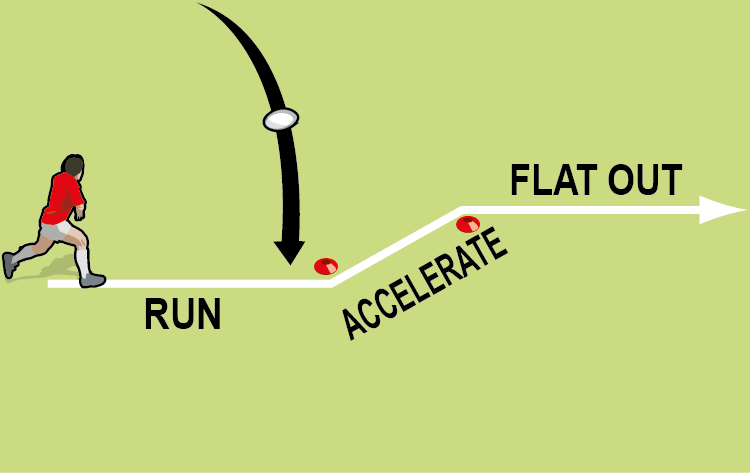
- In this exercise, the player runs to the first cone, then steps and accelerates in the “space”.
- They then straighten and sprint flat out for 10 metres.
- Throw in a ball when the player feels comfortable with the acceleration.
BACK ROW
Back row players need to break quickly from a defensive position to make a tackle. They must also get back into a defensive position to make another tackle.
Much of their work will be short bursts forwards and backwards, with sideways movements to get back into position. They need to be able to recover from contact before sprinting off again.
The more you can introduce game elements, such as a tackle or a pass, the easier it will be for players to see and feel the benefits.
DEFEND FROM THE BACK OF THE SCRUM
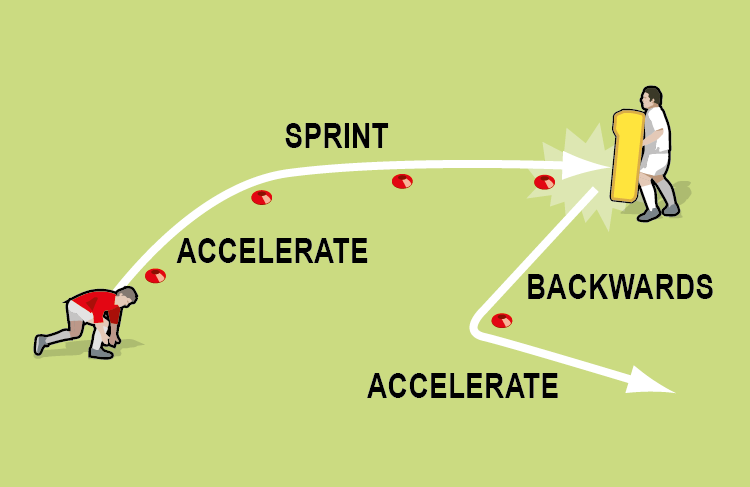
- This is a defensive exercise for the back row.
- They start either kneeling on one knee or leaning against another player.
- They accelerate to a ruck pad and drive it back two metres.
- They run backwards to get in an onside position and then accelerate forwards to make the next tackle.
SCRUM-HALF
Scrum-halves must break from the back of scrums and away from the flankers.
Use an exercise where the scrum-half picks from the base of an imaginary scrum and accelerates on an arc to get away from the defending back row. They then straighten for 10 metres.
This can easily be turned into an excellent decision-making game for your scrum-half. Another player stands where the opposition’s blindside winger would be positioned. Depending on where they are, the scrum-half has to make a decision about whether to break, kick through or pass.
Related Files
Newsletter Sign Up
Coaches Testimonials

Gerald Kearney, Downtown Las Vegas Soccer Club

Paul Butler, Florida, USA

Rick Shields, Springboro, USA

Tony Green, Pierrefonds Titans, Quebec, Canada
Subscribe Today
Be a more effective, more successful rugby coach
In a recent survey 89% of subscribers said Rugby Coach Weekly makes them more confident, 91% said Rugby Coach Weekly makes them a more effective coach and 93% said Rugby Coach Weekly makes them more inspired.
Get Weekly Inspiration
All the latest techniques and approaches
Rugby Coach Weekly offers proven and easy to use rugby drills, coaching sessions, practice plans, small-sided games, warm-ups, training tips and advice.
We've been at the cutting edge of rugby coaching since we launched in 2005, creating resources for the grassroots youth coach, following best practice from around the world and insights from the professional game.
